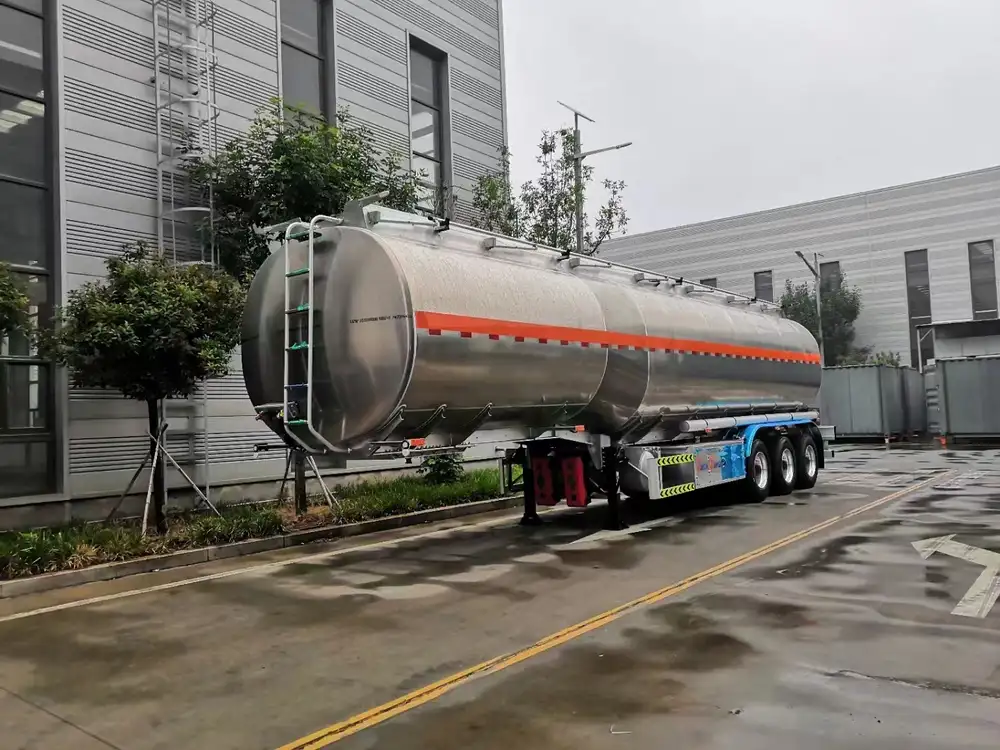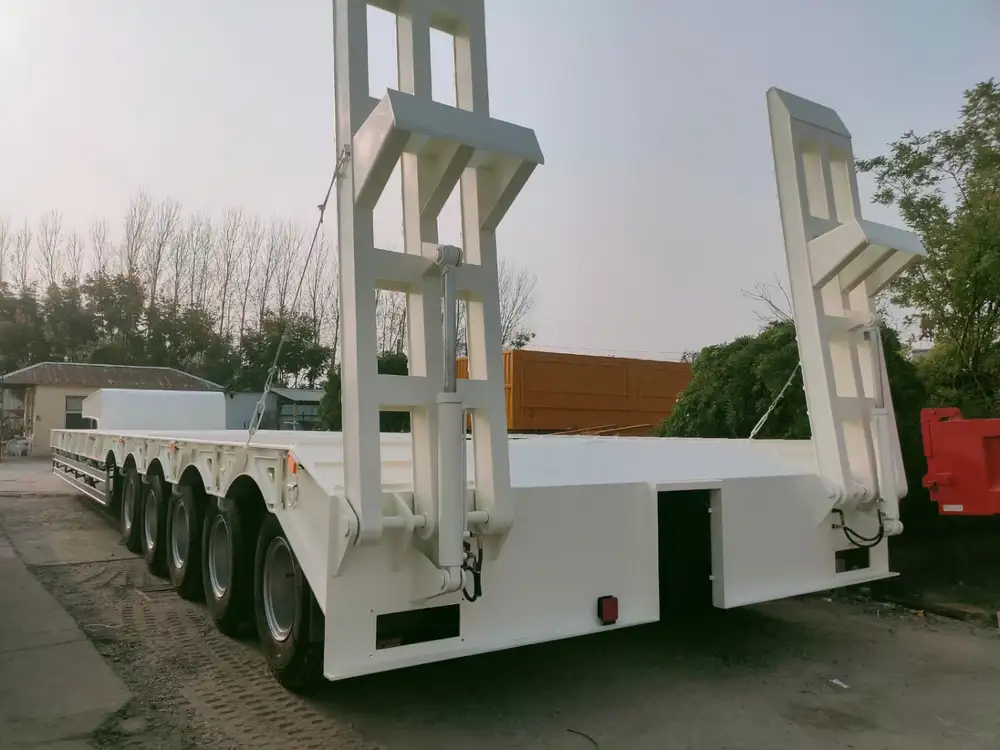When considering the logistics and transport industry, the dimensions of trucks play a crucial role in efficient planning and operation. One of the vital measurements in this domain is truck width. This guide dives deep into everything you need to know about truck widths, their implications on transport regulations, and how they affect various aspects of logistics and hauling.
1. Why Truck Width Matters
Understanding the width of trucks is essential for several reasons:
- Compliance with Regulations: Different jurisdictions impose distinct regulations concerning vehicle sizes, including width. Ensuring compliance can avert exorbitant fines and improve operational safety.
- Load Capacity: Truck width influences how much cargo a vehicle can carry, directly affecting profitability margins and service efficiency.
- Safety Regulations: Wider vehicles may demand special attention during travel, especially on public roads. Their presence can impact visibility and maneuverability.
- Route Planning: Knowing the width of trucks can assist in determining the best routes for transportation, balancing between legal restrictions and physical road capabilities.
2. Standard Truck Widths
Most trucks fall within a specific range when it comes to width. Here’s a breakdown of standard truck dimensions:
| Truck Type | Standard Width (inches) | Standard Width (feet) |
|---|---|---|
| Pickup Trucks | 72 – 80 | 6 – 6.67 |
| Box Trucks | 96 – 102 | 8 – 8.5 |
| Flatbed Trailers | 102 | 8.5 |
| Semi-Trailers | 102 | 8.5 |
| 18-Wheel Trucks | 102 | 8.5 |
Note: Measurements can vary based on the manufacturer’s specifications and customized modifications.

3. The Impact of Width on Truck Capacity
3.1 Load Distribution
Truck width can significantly influence how weight is distributed across axles. Here’s why:
- Stability: A wider truck can provide better stability when turning or traversing uneven ground.
- Weight Distribution: An increased width allows for better load distribution, potentially reducing wear on tires and improving fuel efficiency.
3.2 Load Limits
Different cargo types may have varied general classifications regarding maximum allowable width. For example:
- General Freight: Typically adheres to the standard width of 8.5 feet (102 inches).
- Oversized Loads: Anything wider than the standard measurement requires special permits and often escorts during transport.

4. Variability in Truck Width Across Jurisdictions
Transport regulations fluctuate significantly based on regions:
4.1 United States Regulations
In the United States, the Federal Highway Administration (FHWA) stipulates that the maximum width for a truck is generally 102 inches. However, certain states allow incentives for wider loads under specific conditions:
- California permits up to 120 inches for certain types of vehicles.
- Florida allows trucks stationed in special permits to extend beyond the 102-inch limit for payloads necessary in agriculture.
4.2 International Considerations
Beyond the U.S., width regulations differ globally:
| Country | Maximum Width (inches) | Notes |
|---|---|---|
| Canada | 102 | Similar to the U.S. |
| European Union | 102 | Conforms to international standards |
| Australia | 102 | Uniform regulations |
Understanding these variations is essential for companies operating cross-border logistics.

5. Practical Applications of Truck Width Knowledge
5.1 Route Planning
Comprehending truck widths is instrumental when planning logistics:
- Navigating Urban Areas: Certain roads and bridges may have width restrictions, necessitating thorough planning to ensure that routes are compliant to avoid delays.
- Highway Travel: Wider trucks may encounter limitations when entering certain highways or in toll zones.
5.2 Loading Docks and Facilities
Before transporting goods, knowing the truck width is necessary to ensure seamless loading and unloading processes. This involves:
- Dock Design: Some loading docks may only accommodate standard-width trucks, while others are designed for wider vehicles, necessitating knowledge of your fleet dimensions.
- Material Handling: Different materials sometimes require unique handling techniques based on truck sizes, impacting labor hours and equipment needed.

6. Common Issues Related to Truck Width
While dealing with truck widths, several challenges frequently arise:
6.1 Legal Restrictions
Transport professionals must remain keenly aware of the legalities surrounding truck widths, which can vary widely. Solutions include:
- Consulting Local Regulations: Always check local laws before planning any transport activities.
- Acquiring Permits: For oversized loads, securing the right permits is paramount for smooth operations.
6.2 Infrastructure Challenges
Transporting wider trucks can lead to encounters with infrastructure limits:
- Road Clearance: Some bridges and overpasses may not accommodate larger trucks, causing route changes.
- Parking Regulations: Parking wider vehicles can be challenging, requiring strategic planning to avoid fines or towing.

7. Conclusion
Mastering the nuances of truck width is paramount for any transport manufacturer or logistics operator. From regulatory compliance to impact on cargo capacities, these measurements play a pivotal role in the success of trucking operations. By understanding variances in width standards and their implications on routes and loads, companies can navigate the complexities of the transport industry with agility and foresight.
Investing time in selecting the right truck dimensions, understanding regulatory frameworks, and implementing efficient route planning strategies will equip businesses with the tools needed to optimize operations effectively. With the road riddled with challenges, knowledge of truck widths may be the compass guiding industry players towards success.
Frequently Asked Questions (FAQs)
What is the widest truck allowed on U.S. roads?
- The maximum legal width for trucks is typically 102 inches without special permits.
Are there any exceptions for oversized loads?
- Yes, larger loads may qualify for special permits that allow wider dimensions, but this varies significantly by state.
How does width affect fuel efficiency?
- Wider trucks can experience increased air resistance, which may affect fuel efficiency negatively, but better load distribution might mitigate excess wear.
Can trucks with custom designs exceed the typical width?
- Yes, custom designs can lead to exceeding standard widths, but operators must ensure they comply with local transport regulations.
What measures should be taken for urban deliveries with wider trucks?
- Routes should be pre-planned to avoid low bridges and narrow roads, and specific permits may be required in urban areas with width restrictions.
By providing this level of detail, we strive not only to inform but also to empower our audience to take strategic actions in their logistics operations, making well-informed decisions that enhance compliance and operational efficiency.



